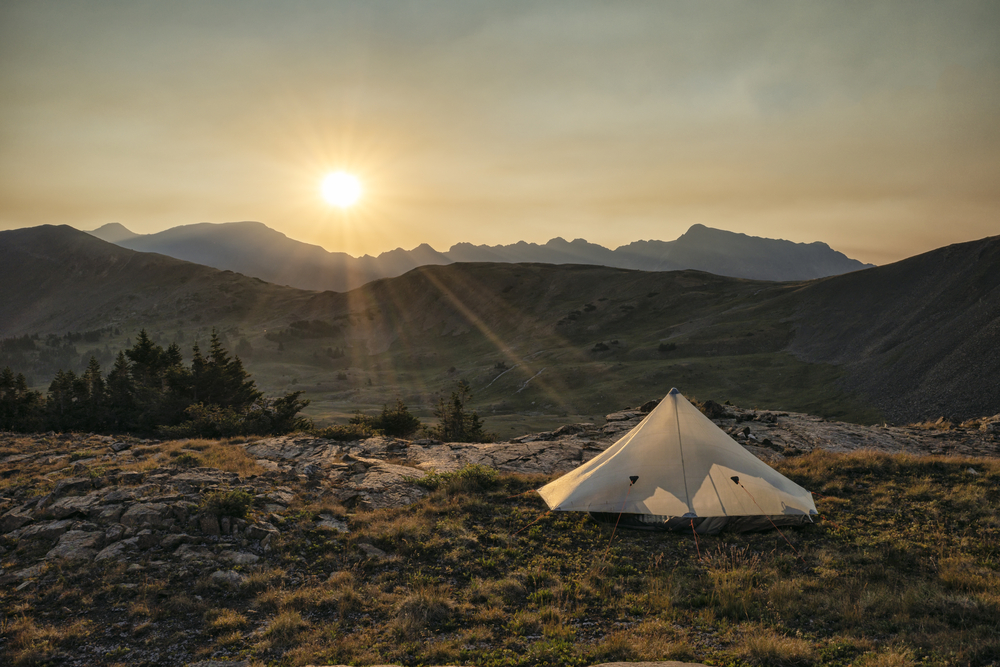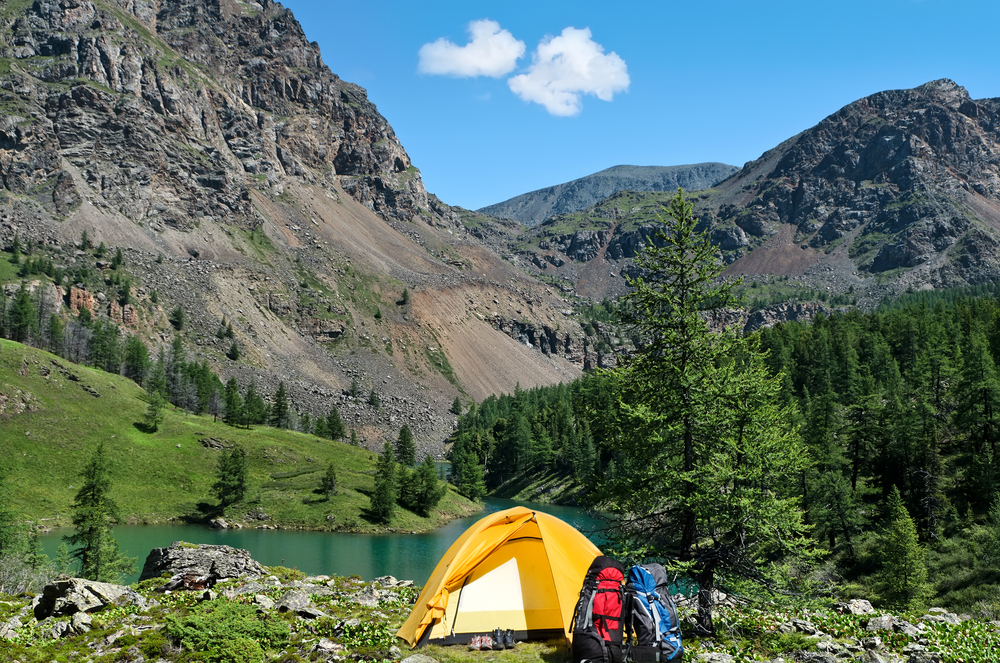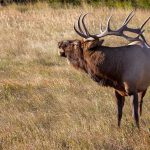The Rocky Mountains, a breathtaking location where nature displays all its beauty and might, is an unsurprisingly popular destination that sees crowds of tourists each year.
If you’d like to bask in the majestic sights of the area, why not consider dispersed camping?
While there are many established campgrounds around the park, nothing beats the sense of adventure and exploration that comes with dispersed camping!
Not only is it budget-friendly, but it’s also a great way to be acquainted with everything the Rockies have to offer.
So, are you curious about free dispersed camping near Rocky Mountain National Park? In this article, we’ll explore a number of different camping areas you can enjoy! We’ll be talking about:
- Eight top spots for free dispersed camping near Rocky Mountain National Park
- Rules and regulations to follow
- Tips for the best dispersed camping experience ever.
Excited? Let’s dive right in!

Dispersed Camping Areas near Rocky Mountain National Park
If you’ve got your sights set on the Rocky Mountain National Park and want to feel the thrill of dispersed camping, we have good news for you. There are plenty of amazing locations waiting for you — just take your pick from the following top spots!
Arapaho National Forest
- Address: Denver, Colorado (see directions)
- Cost: Free dispersed camping
- Designated areas: Check here
- Pros: Offers various activities such as hiking, hunting, and fishing
- Cons: Can be some distance away from the Rocky Mountain National Park
With a sprawling 723,744-acre area encompassing the high Rockies, river valleys, and Continental Divide, the Arapaho National Forest is one of the best places for a tranquil dispersed camping experience!
Twisting through the valleys, you’ll find the unmistakable Colorado River and the South Platte River. A great number of reviews highlight the site’s accessibility and privacy, making it an easy, affordable option for a peaceful weekend away.
Roosevelt National Forest
- Address: Denver, Colorado (see directions)
- Cost: Free dispersed camping
- Designated areas: Check here
- Pros: Excellent winter activities such as hiking and cross-country skiing
- Cons: Can be fairly inaccessible
We can’t talk about the Arapaho without also mentioning its neighbor, the Roosevelt National Forest.
With a breathtaking area of over 800,000 acres, the forest plays host to spectacular scenic sights such as Indian Peaks and – of course – Rocky Mountain National Park!
It’s easily accessible from a number of towns such as Estes Park and Fort Collins, and if you’re keen to explore, you can even visit Arapaho National Forest (above).
The winding roads and unique rock formations are perfect opportunities to simply wander about or try out your photography skills.
Indian Peaks Wilderness
- Address: Near Ward, Colorado (see directions)
- Cost: Free dispersed camping; overnight permits may be required
- Designated areas: Check here
- Pros: Has scenic views
- Cons: Terrain can be steep and some designated areas are difficult to reach
If you want to take in scenery that looks like it’s straight out of a fantasy book, Indian Peaks Wilderness won’t disappoint.
With 50 stunning lakes and eight tall peaks, this culturally rich location also happens to be a jaw-dropping spot for dispersed camping.
Covering 74,000 acres and running 16 miles along the Continental Divide, this protected area is sure to offer you a glimpse into the camping experience of the tribes that once lived here!
Pike National Forest
- Address: Northwest of Colorado Springs, Colorado (see directions)
- Cost: Free dispersed camping
- Designated areas: Check here
- Pros: Features many sights such as lakes, tunnels, and recreation areas
- Cons: Developed sites are not open to overnight camping
At over a million acres, the Pike National Forest is a heavily forested area with a number of fantastic places for dispersed camping.
It’s also an ideal location for being up close and personal with local wildlife such as sheep, chipmunks, and an assortment of birds. TripAdvisor users have rated the forest as a must-visit, and with its huge area, there’s always something for you to see and do!
Comanche Peak Wilderness
- Address: Bellevue, Colorado (see directions)
- Cost: Free dispersed camping
- Designated areas: Camp at least 200 feet away from water sources
- Pros: Peaceful camping experience amid local wildlife and natural sights
- Cons: Nestled deep in the forest, can be inaccessible
If fishing and hiking are your top priorities, Comanche Peak Wilderness is your best bet!
This almost 67,000-acre area was named after the towering Comanche peak looming over the surroundings.
The wilderness, accessible by Fort Collins, ranges through pine and tundra and borders the north and east sides of the national park.
Fascinating wildlife is waiting for you here, including the rare and endangered greenback cutthroat trout.
Never Summer Wilderness
- Address: Southeast of Walden, Colorado (see directions)
- Cost: Free dispersed camping
- Designated areas: Camp at least 100 feet away from water sources
- Pros: Dramatic scenery with plenty of trails to explore
- Cons: Terrain can be challenging
Never Summer Wilderness might catch your attention with its name, but wait till you see its sights!
Located along the northwestern edge of the Rocky Mountain National Park, these 21,000 acres of wilderness boast miles of trails across the Continental Divide.
Get your camera out as you’ll also find two high passes and unmissable views of snow-covered Colorado peaks!
Take a stroll beneath the giant trees, and we guarantee you’ll find the mystical atmosphere unmatched.
Rawah Wilderness
- Address: Near Walden, Colorado (see directions)
- Cost: Free dispersed camping
- Designated areas: No camping within a quarter mile of Blue Lake and Hang Lake
- Pros: Popular destination for its scenery and hunting and fishing activities
- Cons: Its high elevation can be challenging for people who aren’t fit
With its name literally translated into “wild place”, Rawah Wilderness offers the most quintessential dispersed camping experience you’ll find anywhere near the Rockies!
This fascinating, 72,868-acre expanse is high up in the air and offers raw, alpine sights and some of the most spectacular lakes carved by glaciers.
The result? A grand canvas of lakes, mountain meadows, and forested mountainsides and valleys awaiting each camper – so it’s not surprising that this area has been highly rated!
James Peak Wilderness
- Address: Near Boulder, Colorado (see directions)
- Cost: Free dispersed camping
- Designated areas: Camp at least 100 feet away from water sources
- Pros: Various lakes and environments to visit and explore
- Cons: Its high elevation can be challenging for people who aren’t fit
The James Peak Wilderness area spans over 14,000 acres and carries 15 lakes like well-hidden jewels!
This location includes a variety of ecosystems ranging from montane to alpine, so there’s always a unique sight for you to enjoy.
Located just south of the Indian Peaks Wilderness, the area is also accessible from a variety of different places. If you’re coming from Denver, you’re looking at a quick drive of only an hour and a half!
Reviews rave about the site’s incredibly scenic hike and easy environment, so it’s the best spot for people of varying ages or activity levels.
Rules and Regulations for Dispersed Camping near Rocky Mountain National Park
While dispersed camping is available all around the national park, there still are rules and regulations you need to observe to keep yourself safe and the area pristine!
Obtain Required Permits If Necessary
Make sure to check ahead to see if there are required permits for certain areas.
For instance, the Indian Peaks Wilderness area needs permits for dispersed camping, but other locations are a bit more lenient.
Also, permit requirements depend on the trip you’re taking, your length of stay, and how many people you’re with.
Camp at Least 100 Feet Away from Lakes and Streams
Water bodies are essential to all living creatures in your chosen dispersed campsite, and they’ll understandably be wary of humans in the area.
As such, it’s important that you camp a good distance away from lakes and streams. The exact distance will vary between campsites, but 100 feet is a good starting point.
Use Established Campsites When Available
Dispersed camping can be incredibly damaging to the natural environment and wildlife, especially if an area is frequented by irresponsible campers.
Whenever possible, use previously established campsites to minimize your impact on the environment.
Campfires May Be Prohibited Depending on Fire Restrictions
Don’t play with fire! Before heading to the site, check first to see whether you’re allowed to make a campfire.
If you can, it’s best that you use a common spot to avoid the risk of fire spreading uncontrollably.
Pack Out All Trash and Waste
This is absolutely core to the concept of leaving no trace.
Trash items – especially manmade varieties – take a significant time to break down and can also pose a huge risk to wildlife who might mistake them for food.
Respect Wildlife and Their Habitats
There are several important principles you need to follow to minimize your impact on the wildlife, and this includes respecting their habitats.
Keep your distance from animals and never feed them! Steer clear during sensitive times such as mating or when they’re raising their young. This is for the safety of both you and the wildlife.
Stay within Designated Camping Areas
Designated camping areas are there for a reason, as they help keep you and the wilderness safe.
These areas are often selected based on how durable the surfaces are, as well as to minimize the risk of travel damage which can result in soil erosion and barren areas.
Check for Any Specific Area Regulations
You’re fully responsible for keeping your group, yourself, and the environment you choose to stay in safe!
There is no cookie-cutter dispersed camping spot, so prepare for specific area regulations by researching them beforehand.
Follow Leave No Trace Principles
The wilderness surrounding Rocky Mountain National Park is incredibly special and can easily be damaged by human mismanagement.
That’s why, as visitors, you should follow the Leave No Trace principles to help maintain the integrity of the environment. If you’re not familiar with them, check them out here.
Be Prepared for Changing Weather Conditions
Weather can single-handedly make or break a trip.
Make sure you’re completely prepared for any weather condition, especially in high altitudes where things can change very quickly.
Tips for a Successful Dispersed Camping Trip near Rocky Mountain National Park
You want to have the best possible dispersed camping experience ever – so to avoid headaches and potential mishaps, make sure to follow these tips for your next trip!
- Plan and Research Camping Areas in Advance: Knowledge trumps everything. Before you head out, make sure you get to know the area you’re going to and understand how to keep yourself and the environment safe. Pay attention as well to any specific rules governing your campsite.
- Pack Lightweight and Compact Gear: Dispersed camping often means you’ll bring more than what you’d usually pack. Going for lightweight, versatile, and multi-purpose tools can be the difference between a good and a bad trip. Create a comprehensive list of things you might need, but don’t get carried away and start overpacking!
- Bring Sufficient Food, Water, and Cooking Supplies: Preparation is everything when you’re camping. You’re heading out to the wilderness; there aren’t any McDonald’s waiting behind the corner in case you get hungry. Before heading out, plan your meals with nutrition and shelf life in mind. If things unexpectedly go south, bringing an extra day of food and water can make all the difference.
- Carry Navigation Tools (Map, Compass, GPS): Technology is truly wonderful, so make the most of it! Carry navigation (tools such as GPS) with you as these are incredibly useful for any wilderness trip. And since tech isn’t always foolproof, it’s also a good idea to bring traditional, offline options like printed maps and a compass as well.
- Set up Camp Early to Find a Good Spot: As much as you can, set up camp early and avoid waiting till it’s dark before building your tent. You need a good view of your surroundings so you can easily check if you’re in the correct spot. Having the benefit of sunlight will help you identify any potential hazards!
- Follow All Camping Rules and Regulations: Avoid becoming the next cautionary tale that park and forest rangers tell future campers about! Follow all camping rules on site, as these are for your safety.
- Camp at Least 100 Feet Away from Water Sources: When you’re camping, it’s helpful to remember that wildlife is naturally wary of humans! As such, it’s important to give them plenty of space – especially when it comes to water sources. Staying away will also prevent you from accidentally messing with the quality and safety of the water supply.
- Leave the Campsite Cleaner than You Found It: While it’s important to leave no trace, why not try to go beyond that? Make a conscious effort to clean up after yourself and less respectful campers, and leave the place cleaner than when you arrived. We want to keep dispersed camping accessible, so pay attention to the environment’s cleanliness.
- Be Aware of Local Wildlife and Safety Precautions: You may think of animals as cute, cuddly, and friendly, but the feeling probably isn’t mutual. No matter what, leave all wildlife alone to save them from unnecessary stress and to protect yourself from their natural defensive instincts. This is especially important during sensitive periods, such as when they’re mating or rearing their young.
- Respect Other Campers and Their Solitude: It’s easy to get carried away when you see other campers out there enjoying nature. As you would with wildlife, don’t disturb others unnecessarily and give them the space they deserve. Remember the golden rule: treat others as you’d like to be treated!
FAQs
Can you disperse camp in Rocky Mountain National Park?
No. There are no dispersed camping options in the national park itself! If you want to spend the night in the park, designated campsites are your only option. Are you looking to experience dispersed camping? If so, bordering areas like the Arapaho National Forest are your best bet.
Can you camp for free in Rocky Mountain National Park?
A major appeal of dispersed camping is that it’s legal and free – but again, since it isn’t allowed inside Rocky Mountain National Park, there are no free camping options there! Paid campgrounds are your only option if you insist on staying within the national park.
Can I camp anywhere in Rocky Mountain National Park?
As thrilling as the idea sounds, no, you can’t camp anywhere you want. Designated campsites really are your only option, so it’s best if you just head straight to one. You don’t want to get in trouble for setting up camp elsewhere in the park!
Can you overnight camp in Rocky Mountain National Park?
Yes, you absolutely can! Overnight camping is one of the best activities in the national park, and if you have the option, you really should give it a go. Just make sure you’re aware of the fees and have a reservation — it’ll be a truly unforgettable experience!






